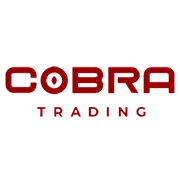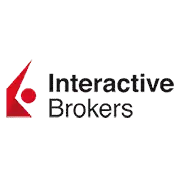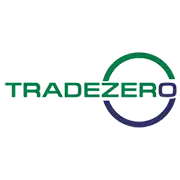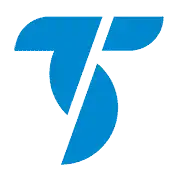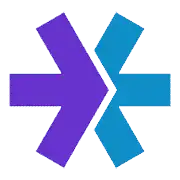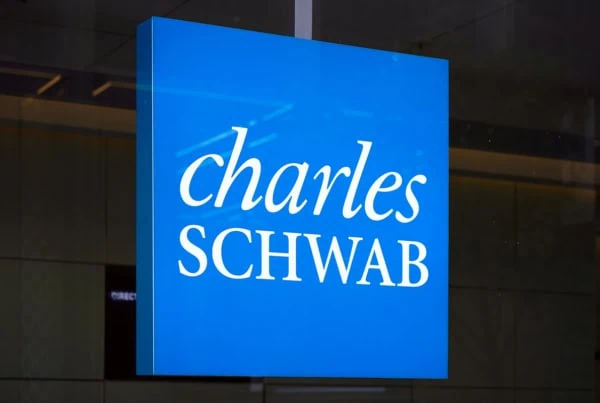Your typical investment is a bet on the upside of an asset—the more a stock, a fund, a piece of real estate appreciates, the more your investment grows in value.
But what if you want to bet against an asset?
You have a few tactics at your disposal. Put contracts and other options strategies allow you to participate in a company’s downside, for instance. Also, certain exchange-traded products (ETPs) provide inverse exposure to indexes and stocks, so when they go down, your profits go up. However, many investors prefer short selling—perhaps the most direct way to profit from an asset’s decline.
Today, I’m going to talk about some of the best brokers for short selling. While many brokerage platforms allow investors to sell stocks and other assets short, some are simply better suited to the practice than others—and indeed, a few brokers have actually developed specializations in short selling.
Brokers for Short Selling—Our Top Picks
|
4.5
|
4.5
|
4.3
|
|
DAS Trader Pro: $125/mo. Sterling Trader Pro: $150/mo.* Cobra TraderPro: $100/mo.* Data fees separate.
|
IBKR Lite: Commission-free equity trading. IBKR Pro: Minimal commissions*.
|
CenterPoint Web: $20/mo.* CenterPoint Pro: $120/mo.**
|
The Best Brokers for Short Selling

Which of the following brokers is best for you largely revolves around your needs and preferences. Some traders want the lowest margin rates possible. Others prioritize quick execution and high availability of shortable shares. And still others shine because their platforms are best designed for traders of a certain experience level.
Let’s take a look:
1. Cobra Trading (Best Overall for Short Sellers)
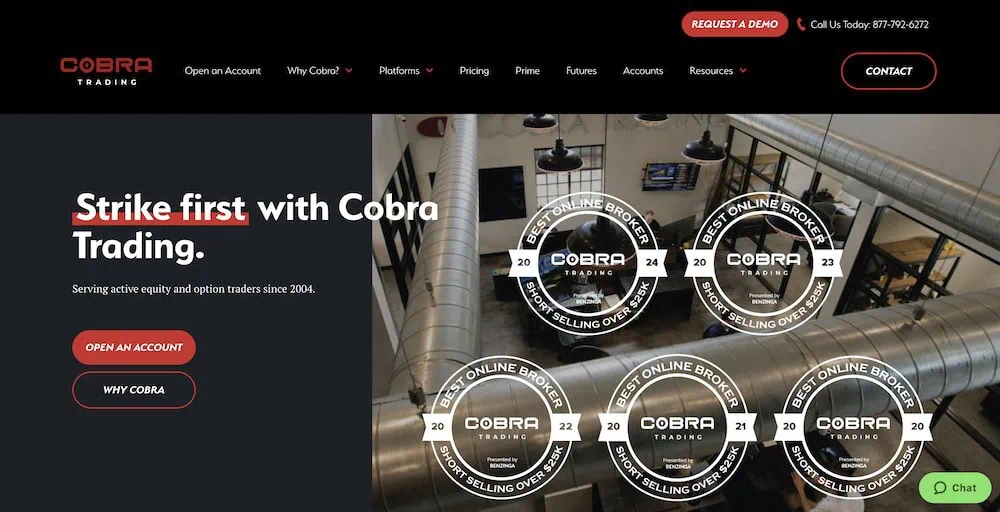
- Available: Sign up here
- Best for: Professional traders and day traders interested in short selling
- Platforms: Desktop app (Windows), web, mobile app (Apple iOS, Android)
Cobra Trading is a direct market access (DMA) broker that offers a host of sophisticated trading tools that day traders can leverage to execute trades fast and efficiently. Armed with a proactive and responsive customer support team, Cobra Trading caters toward the needs of institutional and retail traders seeking low trading commissions and locate costs.
The trading platform is specifically designed to cater to professionals with comprehensive trading needs. Currently, Cobra services traders who want to day-trade stocks, ETFs, and options. (If you’d like to trade futures or forex, you can access Cobra Trading’s companion service, Venom Trading).
While the types of tradable assets are fairly narrow in scope compared to other trading platforms, Cobra excels in the assets it offers. It particularly excels in short selling—because Cobra utilizes multiple vendors for locating shorts, Cobra is able to offer one of the most impressive inventories of short opportunities in the market.
Fees are solely based on supply and demand, too, and the firm doesn’t charge overnight locate multiplier fees that many other brokerages charge. Moreover, the firm’s direct access allows for better execution on position entries and exits at better pricing. All of this helps bring down the cost of trading for active traders.
Cobra is available through three trading platforms:
- DAS Trader Pro ($125/mo., waived if trade >200,000 shares/mo.): Platform includes advanced order types, basket trading, charting, and multi-account management in real-time
- Sterling Trader Pro ($150/mo., waived if trade >200,000 shares/mo.): Direct-access trading platform for trading equities and options
- Cobra TradingView Integration ($100/mo., waived if trade 200,000+ shares/mo.): Integrates Cobra Trading with TradingView, allowing you to trade on the charting platform.
Cobra Trading also offers a Cobra PRIME package: a curated suite of deeply discounted trading solutions and cutting-edge tools and resources. To qualify, you’ll need to be among Cobra Trading’s most active traders and trade at least 200,000 shares per month and maintain that average going forward. (If you trade more, you’ll move into a higher Cobra PRIME tier, enabling you to select more choices.) If you don’t qualify, you can still purchase the software of your choosing at Cobra’s discounted rate.
One trade-off for opening an account with Cobra Trading are the high account minimums: U.S. and non-U.S. residents need $30,000 to open a day-trading account, with a $25,000 minimum daily balance required (SEC requirement). If you’re not day trading, the minimum is less; starting deposits can be as low as $3,000.
In short, this platform is meant for serious pattern day-traders. But if you meet the above minimum requirements, prize exceptional customer service, speed, and savings, Cobra Trading might be worth exploring for your active trading needs.
- Cobra Trading is a direct access broker equipped to handle active traders' equity and options trades at competitive commissions and contract rates.
- Cobra is one of the best short-selling specialists available, offering one of the most robust shortable inventories of equities in the market. Fees are extremely low, and it doesn't charge overnight locate multiplier fees.
- Cobra is available on three trading platforms: DAS Trader Pro, Sterling Trade Pro, and TradingView.
- Extremely active traders can qualify for Cobra PRIME: a suite of deeply discounted trading solutions, as well as cutting-edge tools and resources.
- Cobra Trading requires a $27,000 minimum initial deposit for pattern-day traders ($3,000 otherwise). Pattern-day trader accounts must maintain a minimum balance of $25,000.
- Large universe of shortable stocks
- Cobra PRIME offers access to free or deeply discounted curated trading solutions
- Low, transparent commission structure
- Responsive customer service
- Platform fee
- High account minimum ($30,000 on day-trading accounts)
- Limited selection of tradable asset types
Related: 12 Best Long-Term Stocks to Buy and Hold Forever
2. Interactive Brokers (Best for Day Traders)
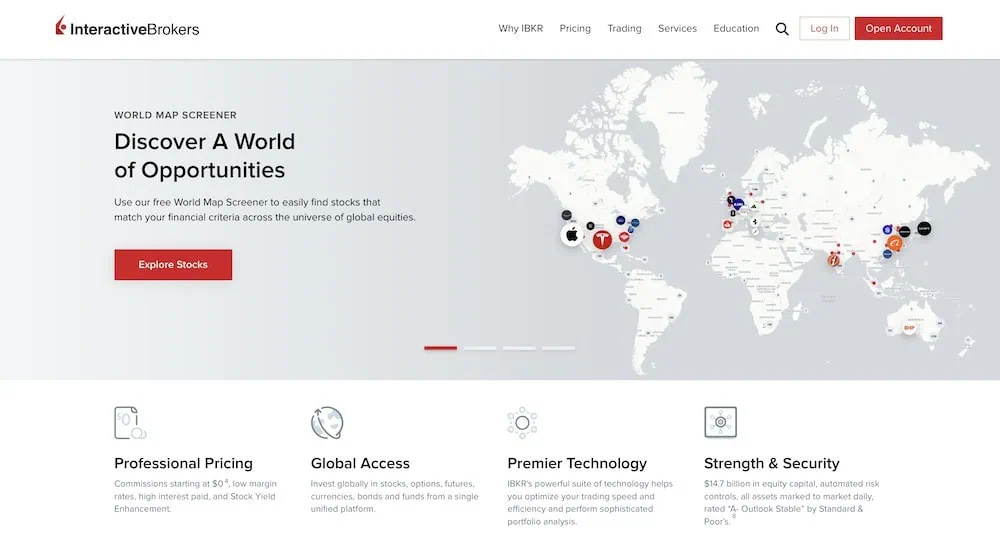
- Available: Sign up here
- Best for: Intermediate and advanced day traders
- Platforms: Desktop (PC, Mac), web, mobile app (Apple iOS, Android)
Interactive Brokers (IBKR), founded in 1978, is the largest U.S. electronic trading platform, offering traders access to stocks, bonds, funds, options, cryptocurrencies, foreign exchange, and more. It’s one of our favorite platforms for day traders period, and it’s one of the best brokers for shorting stocks.
IB users can search for shortable stocks through the broker’s Securities Loan Borrow (SLB) system. The system will show you how many shares are available and the number of lenders. You can also compare costs by looking at both current and historical indicative borrow rates. And if you plan on shorting multiple stocks, SLB allows you to search for them simultaneously by uploading a bulk request text file.
On the other side of the trade, IB is one of a handful of brokers that will pay you interest for allowing the broker to borrow shares from you so they can lend them to other short sellers.
Interactive Brokers even offers a free calculator for non-users who want examples of what it would cost to borrow stock.
IB itself provides a number of access points for traders, but Trader Workstation (TWS) remains the workhorse. The platform supports investments across 150 global markets, and offers a wide variety of features, including real-time monitoring, risk management tools, paper trading—all packaged under a heavily customizable layout.
While TWS users can still select the original view, they can build their own bespoke view through Mosaic. Functions such as stock monitoring, order entry, charts, and more appear as “tiles,” sized and arranged however you want them, and you can save custom layouts designed for one or more monitors.
Trader Workstation also lets investors:
- Create example watchlists
- Use preset scans or build your own
- Create real-time trading alerts using price, time, margin, and volume
- Access more than 100 order types and algorithms to execute better trades
- Read breaking news from Reuters, Dow Jones, and other news outlets
- Access research from Morningstar, Zacks, and other firms
IBKR Lite/IBKR Pro
Interactive Brokers offers two primary plans—IBKR Lite and IBKR Pro—and both have no account minimums and zero maintenance fees. They also provide investors with access to many of the same features, including the Client Portal, Trader Workstation, and IBKR Mobile platforms; advanced order types; fractional shares of U.S. and European stocks and ETFs; paper trading; and Risk Navigator, which evaluates your risk in single positions or across your entire portfolio.
IBKR Lite is most suitable for beginner and intermediate investors, offering unlimited commission-free U.S.-listed stock and ETF trading, and fixed pricing for non-U.S.-listed stocks and ETFs, mutual funds, options, and futures.
IBKR Pro, meanwhile, is meant for advanced investors and active traders. While it does charge commissions on even U.S.-listed stocks and ETFs, it provides better execution for trades via its IB SmartRouting, which seeks out the best available prices for stocks and options across exchanges and dark pools.
Pro also offers some features not available on IBKR Lite, including higher interest paid on idle cash balances, lower interest charged on margin loans, backtesting, and access to IBKR APIs, which allow you to build your own custom trading applications and even develop commercial trading software—features often used by hedge funds, Registered Investment Advisors (RIAs), and proprietary trading firms.
You can visit Interactive Brokers to sign up or learn more.
- Trade stocks, bonds, ETFs, mutual funds, options, cryptocurrencies, foreign exchange, futures, micro futures, and futures options using the powerful legacy Trader Workstation desktop software or IBKR's web and mobile platforms.
- No account minimums, no maintenance fees with both IBKR Lite and IBKR Pro.
- Commission-free stock and ETF trading with IBKR Lite.
- Optimized trade execution and higher interest on cash balances with IBKR Pro.
- Earn interest rates of up to 4.08% on instantly available cash.
- Earn extra income on your lendable shares with IBKR's Stock Yield Enhancement program.
- Access features including watchlists, preset or customized stock scans, real-time trading alerts, advanced order types, and news and research from numerous leading providers.
- Excellent selection of available investments
- Extremely feature-rich desktop (Trader Workstation) and app (IBKR Mobile) platforms to satisfy even the most advanced traders
- Below-average options contract fees
- Trader Workstation Mosaic view is versatile and highly customizable
- Share lending program
- Robo-advisory services are available through Interactive Advisors
- Mobile app can be buggy, difficult to navigate, and sometimes has long load times
Related: 7 Best Growth Stocks to Buy [Find Your Edge]
3. CenterPoint Securities (Best for Professional Traders)
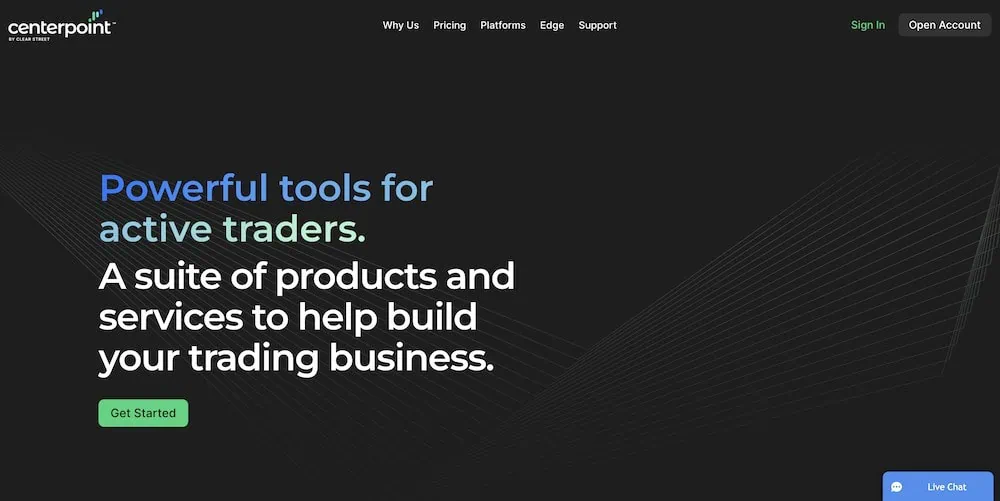
- Available: Sign up here
- Best for: Professional traders
- Platforms: Desktop app (Windows), web, mobile app (Apple iOS, Android)
CenterPoint Securities is a trading platform designed to handle the myriad needs of professional traders—especially those that focus on market volatility to capture returns, including options traders, day traders, and short-sellers.
The tradable assets are narrow in scope compared to other trading platforms—CenterPoint currently only supports stocks, ETFs, and options. But CenterPoint excels in allowing traders to deal in those assets more effectively than many other brokers. This direct market access broker offers more than 30 routing options, lowering spreads and execution times; extremely competitive commissions (including discounts for high-volume traders); and rapid customer support (CenterPoint claims an average five-minute response time for emails and two-ring response time for phone calls).
CenterPoint is also one of the best brokers for short selling, offering a broad list of more than 5,000 easy-to-borrow securities (as of the time of initial publication). And if you want to short securities that are hard to borrow? CenterPoint’s team of more than 20 securities lending specialists leverages the broker’s relationships with more than 45 counterparties to find the shares you need.
Extremely active traders can take part in CenterPoint Edge—a series of free benefits including access to outside trading tools (Trade Ideas, TrendSpider, DilutionTracker, and more), CenterPoint-exclusive routes, interest on idle cash, and more. Benefits vary based on account equity or trading volume.
However, CenterPoint itself isn’t free. Traders can get web access via CenterPoint Web at $20 per month, plus an additional $25 per month if you want to add mobile access. However, CenterPoint Web is a somewhat limited experience. Traders who want more routes, risk control, charting options, and customizations must subscribe to CenterPoint Pro at $120 per month (mobile access included). Real-time market data is sold a la carte; costs vary by data need and investor status but range from $1.50 to $100 per month. And while CenterPoint does offer discounts on locate fees depending on your account equity, locate fees and overnight fees can be pricier than other short selling specialists.
Lastly, on top of the ongoing monthly subscription fee, CenterPoint Securities also has a very hefty minimum deposit requirement of $30,000. While a high dollar figure, this isn’t much higher than the minimum $25,000 of equity needed to qualify as a pattern day trader on any day the customer trades.
In short, this platform isn’t meant for newbies—only serious traders will have interest in using CenterPoint Securities to handle their trades. And while pricey, CenterPoint Securities meets a high bar for platform experience and customer support.
- CenterPoint Securities is a professionals-only direct access broker offering sophisticated tools and fast execution of stock, ETF, and options trades.
- Outstanding selection of shortable stocks.
- Direct market execution, order routing, and clearinghouse selections.
- Very active traders can take part in CenterPoint Edge—free benefits including access to outside trading tools such as Trade Ideas and TrendSpider, CenterPoint-exclusive routes, interest on idle cash, and more.***
- Requires a $30,000 account minimum.
- Large universe of shortable stocks
- Direct market execution
- Flexible order routing and clearinghouse selections
- Premium access to industry-leading services for high-volume traders
- Platform fee
- High minimum deposit requirement ($30,000)
- Limited selection of tradable asset types
Related: 7 Best Value Stocks for 2024 [Smart Picks for the New Year]
4. TradeZero (Best for Cost-Conscious Traders)
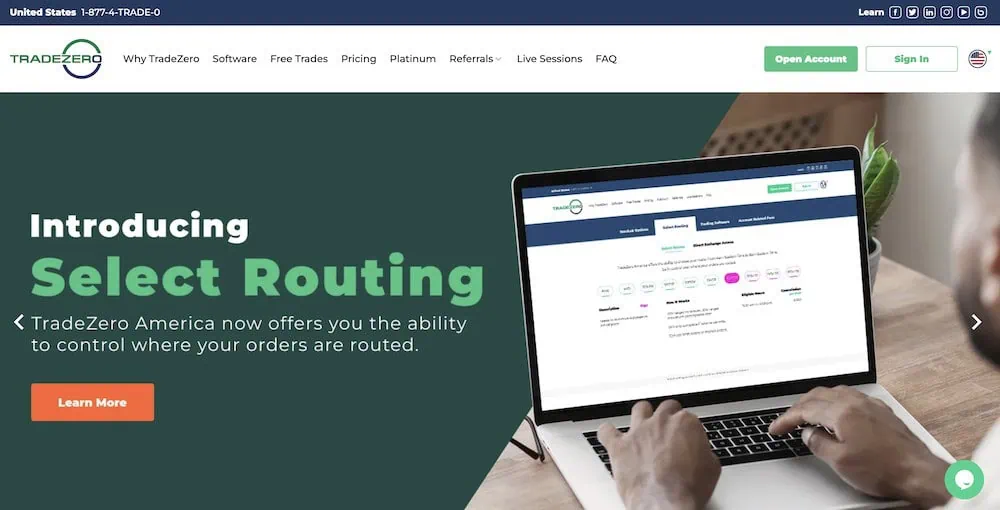
- Available: Sign up here
- Best for: Cost-conscious advanced traders
- Platforms: Desktop app (Windows), web, mobile app (Apple iOS, Android)
TradeZero is a powerful and smartly designed set of trading platforms that provides a wide variety of tools and features geared toward advanced traders while charging low (and often no) commissions.
Traders can experience TradeZero across a number of different software offerings, depending on their subscription. A free subscription provides access to ZeroFree and ZeroMobile, while the paid ZeroPro subscription unlocks ZeroPro, ZeroWeb, and ZeroMobile:
- ZeroPro: Full-featured, customizable desktop-based software with advanced charting, Level 2 quotes, real-time news and more.
- ZeroWeb: Easy-to-use browser-based software with some of the same features as ZeroPro, but with a few limitations (examples: no options, no top lists).
- ZeroFree: A slim but free browser-based trading experience that still allows for more advanced trading, such as short selling and options.
- ZeroMobile: A surprisingly robust mobile experience that’s included with all platforms.
Short sellers will love TradeZero’s extensive list of borrowable shares. Between a huge selection of easy-to-borrow shares and TZ’s ability to find HTB shares, the platform claims clients have access to more than 14,000 symbols every day. TradeZero also has a novel shorting feature: Short Locates Plus. If you find any locates you no longer need, you can mark them for credit—if TradeZero is able to re-allocate those shares to another client, you’ll recoup part of your locate costs.
For traders with a minimum balance of $25,000, TradeZero also provides direct exchange access on some orders with no per share or per order minimum, as well as the ability to choose your route on all trades made between 4 a.m. and 8 p.m. Eastern.
Traders pay no commissions on market and limit orders on NYSE, AMEX, or Nasdaq securities as long as those stocks are priced at $1 or more. Premarket trades are 0.5¢ per share. Stocks priced at less than $1, as well as OTC/Pink Sheet trades, are also 0.5¢ per share, with a minimum charge of 99¢ and maximum of $7.95.
You can learn more or sign up at TradeZero.
- TradeZero America lets advanced and professional traders trade quickly and cost-efficiently no matter the platform: desktop, browser, or mobile.
- No commissions on market and limit orders on most stocks and ETFs, and cheap commissions for premarket and OTC/Pink sheet trades.
- TradeZero provides short sellers with access to more than 14,000 symbols daily, including a large selection of hard-to-borrow stocks.
- Find locates you no longer need? You might be able to earn credit for those locates if TradeZero is able to re-allocate them to another client.
- Requires a $250 account minimum.
- Large universe of shortable stocks
- No commissions on most stock and ETF trades
- Great variety of software platforms
- Platform fee
- High transfer fees
- Limited selection of tradable asset types
Related: Best Day Trading Platforms
5. TradeStation (Best for Advanced Traders)
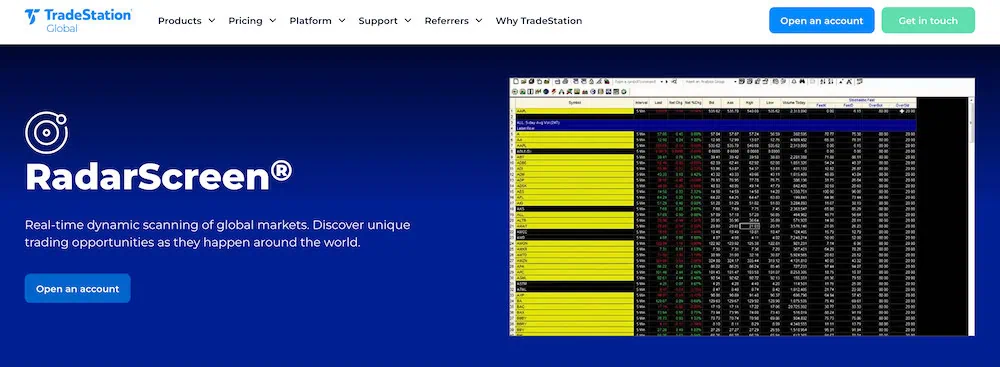
- Available: Sign up here
- Best for: Advanced traders, options and futures traders, active stock traders
- Platforms: Desktop app (Windows), web, mobile app (Apple iOS, Android)
TradeStation Select is a powerful trading system that includes a full-featured desktop app, a robust web trading platform, and a highly rated stock trading app—all of which include numerous tools for trading stocks that are useful to seasoned professionals.
TradeStation’s wide selection of available investments extends to its short selling capabilities. TradeStation allows you to short not just equities and ETFs, but Micro E-mini futures as well. TradeStation, thanks to its relationships with several broker-dealers, also boasts better-than-average access to equities for short selling.
What makes TradeStation different?
TradeStation is one of the most high-powered stock trading platforms on this list. That’s because opening a TradeStation brokerage account provides you with free access to the TradeStation Analytics platform, which includes tools such as:
- Matrix: TradeStation packs market depth, advanced order entry, and order tracking all in a single window, then combines it with one-click trading and extremely fast order execution. TradeStation calls it the “Swiss Army Knife of trading tools,” and it’s an apt description.
- RadarScreen: Identify trading opportunities with RadarScreen, a real-time screener that can monitor as many as 1,000 tickers. You can also use RadarScreen to rank those stocks based on your own custom criteria, or based on more than 180 preset (but customizable) fundamental and technical indicators.
- OptionStation Pro: This app provides a more visually appealing, and easier-to-understand, method of exploring the options markets. You can build option chains, model options positions with 3D graphics, and quickly place your trades.
- EasyLanguage: Want to take your trading to the next level? Create your own trading tools, indicators, even applications, with this trading-focused programming language—a language TradeStation already uses in every one of its indicators, strategies, and user functions.
(Note: Even if you don’t use TradeStation as your trading platform, you can still access TradeStation Analytics for $99 per month if you’re a non-professional trader, or $199 per month if you’re a professional trader.)
Other trading features include a simulated trading mode that allows you to test out trading plans without putting your funds at risk, backtesting, and customizable charting.
A passive feature of note is the Fully Paid Stock Lending Program. Through the program, you can allow TradeStation to lend out fully paid or excess margin securities, and in exchange, they’ll pay you a portion of the interest TS earns each day.
Other considerations
TradeStation is one of the best stock trading apps for advanced traders, but even experts might need a hand every now and then—and less experienced traders very well might need assistance. Fortunately, TS offers personalized support from the company’s brokerage professionals.
While TradeStation is commission-free, it’s hardly cost-free. Margin rates are very good (a fixed 6%) for those with margin balances of $2 million or more. However, margin balances of between $500,000 and $199,999 are set at 8%, those at $50,000-$499,999 are set at 12.5%, and those at less than $50,000 are set at 13.5%.
Other considerations? Stock options trades still require a 60-cent contract fee. Futures trades are charged $1.50 per contract per side, micro futures trades are charged 50 cents per contract per side, and futures options are charged $1.50 per contract per side. Margin rates, currently in the double digits, are high compared to peers. And mutual fund fees are a steep $14.95 per trade—no big deal for traders, who likely would avoid them anyways, but a hurdle for anyone looking to buy and hold mutual funds in their TS account. Lastly, the stock trading platform charges a $10 per month fee for accounts with balances under $5,000 that place fewer than 10 trades per month.
And let’s be clear: Beginning traders could be overwhelmed by this service, which caters to extremely active and experienced traders.
Regardless, TradeStation’s top-of-class trading tools (and a wide variety of ways to access them) makes it one of the best stock trading platforms for advanced traders on this list. Intermediate users should be able to make plenty of hay on this platform, too. So if you’re interested, visit TradeStation to sign up for an account or get more information.
- TradeStation is a powerful trading platform that allows you to invest in a wide array of products, including stocks, ETFs, mutual funds, options, bonds, forex, futures, micro futures, and futures options. You can also participate in IPOs through TradeStation.
- The platform comes equipped with trading and investing tools that are useful to seasoned professionals and new traders alike. Identify trading opportunities, explore option markets visually, even create your own trading tools with TradeStation's proprietary programming language.
- TradeStation's brokerage services and trading education resources are recognized by respected industry reviewers.
- Excellent selection of available investments
- Professional trading features and capabilities
- Intuitive trading interfaces and tools
- Competitive pricing for trading volume
- Varied and confusing fees for specific actions/events
- Mac users can only run TradeStation desktop platform through a Windows emulator
Related: 6 Best Apps for Trading Stock Market Futures
6. Webull (Best for Beginner Short Sellers)
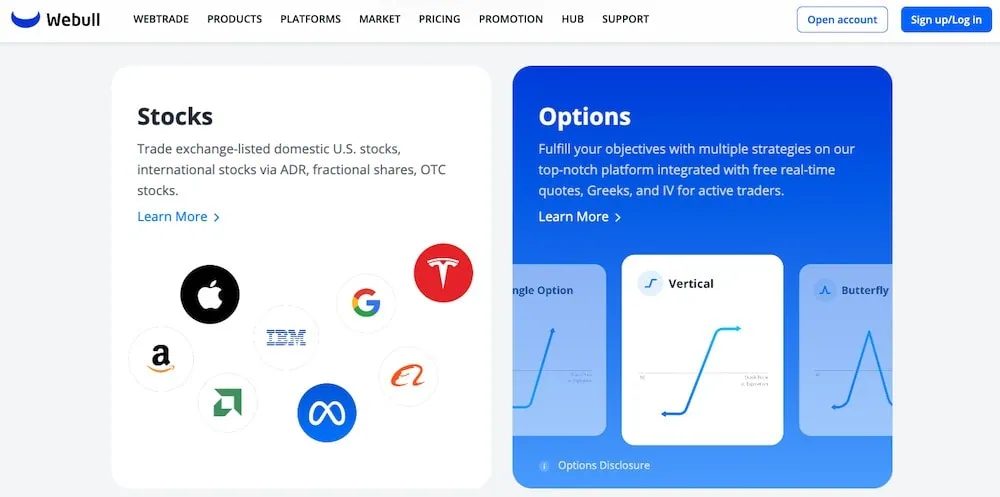
- Available: Sign up here
- Best for: Self-directed investors and intermediate traders
- Platforms: Desktop app (Windows, macOS, Linux), web, mobile app (Apple iOS, Android)
Webull first hit the investing world in 2018 and made a splash by offering free stock trading, as well as commission-free trading of exchange-traded funds (ETFs) and options. And since then, it has become one of the best stock apps for intermediate traders and investors, though many of its features are helpful to beginners as well.
For one, Webull remains friendly to wallet-conscious traders today. It costs nothing to open a Webull account. Stocks, ETFs, and options still trade commission-free. Many options have $0 contract fees. And Webull has no deposit minimums. On top of that, it offers fractional shares, which allows investors to start buying for as little as $1. So beginners working with small dollar amounts can still easily diversify across numerous investments.
Newer investors can also learn trading skills through the courses in Webull’s education center, and even practice their skills via Webull’s paper trading service.
And Webull is available across just about every platform, allowing you to research, trade, and track your stocks on your smartphone, tablet, or desktop.
Webull does allow short selling on its platform, but it only offers a modest selection of shortable stocks and above-average margin costs for most account balances. It’s a good place to experiment with shorting stocks, though more advanced traders who want to engage in regular short selling will likely want a more feature-rich broker with better access to shares.
Why choose Webull to trade stocks?
Webull provides investors with several useful features and tools, including:
- Customizable screeners for both stocks and ETFs
- Preset lists—including Top Gainers, Top Losers, Most Active, and Best-Performing Industries—investors can use to identify opportunities
- Voice commands: Simply speak to buy, sell, or look up information about a ticker
- “Big Button Mode”: Populates giant buttons on your screen that allow you to quickly make trades with just a push
- Charting tools
- Free real-time stock quotes and stock alerts
We’ll point out that while Webull allows for many types of commission-free trades, other costs will still apply to a few transactions. For instance, a 55-cent contract fee applies to certain options trades. And Webull doesn’t directly charge fees for trading cryptocurrencies; however, it does build a 1-percentage-point markup into the price of cryptocurrency when you buy or sell crypto.
One particularly noteworthy shortcoming for investors is that you can’t buy mutual funds on Webull. Yes, ETFs offer a wide array of diversified strategies, but the mutual fund world offers some cheap index funds and many successful actively managed strategies.
Regardless, Webull remains one of the best, and most cost-friendly, trading platforms you can come across. And on top of all the free features mentioned above, Webull also runs frequent promotions that allow investors to collect free stocks.
Read more in our Webull review, or sign up at Webull today.
- Webull is a low-cost trading and investing app that allows you to invest in stocks, ETFs, options, futures, commodities, and crypto, and even participate in initial public offerings (IPOs).
- No-commission stock, ETF, and option trades (and many options have $0 contract fees).
- Trading features such as charting tools, technical indicators, customizable screeners, real-time stock alerts, and group orders.
- Let Webull manage your money for you with Webull Smart Advisor, which combines Webull's in-house investment expertise and artificial intelligence to build, manage, and rebalance an ETF portfolio for you.
- Sign up for Webull Cash Management to earn up to a 4.1% APY on uninvested cash.
- New users get one free month of Nasdaq TotalView's Level 2 Quotes service. (That subscription costs $2.99/mo. thereafter.)
- Subscribe to Webull Premium and receive a premium APY on uninvested cash in individual and joint cash accounts, premium margin rates, a 3% match when you transfer or roll over your IRA, and an extra 3.5% match on qualifying IRA contributions.
- Special offer: Make an initial deposit of at least $2,000 and receive 1.) a $100 cash bonus, 2.) a 2% match of your deposit (up to a maximum bonus of $20,000), 3.) a 30-day voucher for Webull Premium, 4.) a 30-day 4.0% APY booster on uninvested cash (for a total of 8.1%).**
- Good selection of available investments
- Fractional shares
- Powerful technical analysis tools
- Offers robo-advisory services
- Accessible to beginning and intermediate users
- Voice commands
- Offers highly competitive APY through Webull Cash Management
- Does not support mutual funds
Related: 7 Best Stock Recommendation Services [Stock Tips + Picks]
7. E*Trade (Best Traditional Broker for Short-Selling)
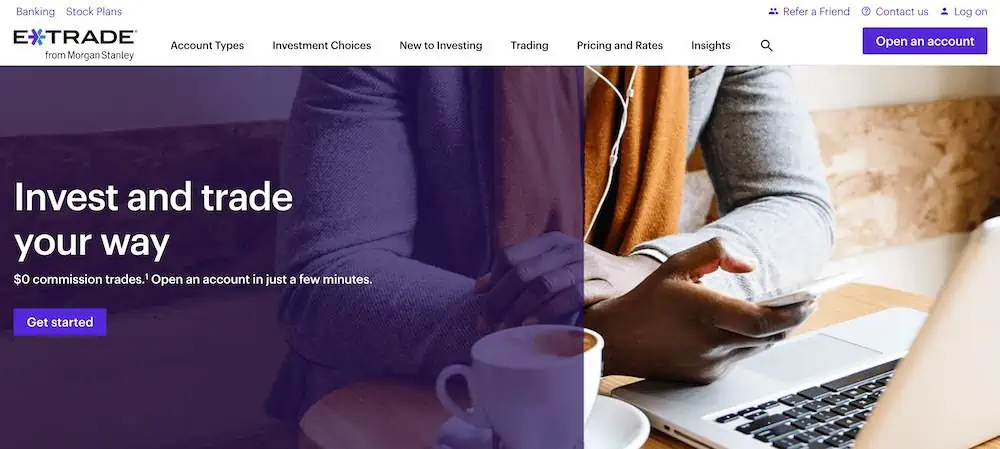
- Available: Click “Open Account” below
- Best for: Intermediate investors and traders
- Platforms: Web, mobile app (Apple iOS, Android)
E*Trade has long been seen as a leading stock trading app for retail investors. It allows you to invest in a wide array of assets, and it provides educational resources that will help you with investment research, portfolio analysis, and building a diversified set of holdings.
E*Trade, like most of the best stock trading apps, offers zero-commission stock, ETF, and options trading. It also has a leg up on some platforms by offering $0-commission mutual fund, Treasury, and new-issue bond trading.
Options still incur a 50- to 65-cent contract fee. However, E*Trade also has an options program called the “Dime Buyback Program.” If you close an equity option priced at 10¢ or less, E*Trade won’t charge you a per-contract fee.
Meanwhile, bond trades are $1 apiece, and futures trades are $1.50 per contract per side, plus other fees.
You can short securities at E*Trade, but we wouldn’t recommend E*Trade if your primary interest is short selling. E*Trade’s easy-to-borrow list isn’t as extensive as many specialists, and its fees aren’t terribly transparent. However, if you’re looking for a well-rounded broker, and short selling is just a minor interest, E*Trade makes a lot of sense.
Like with a couple other trading apps on this list, E*Trade also allows you to earn additional income by allowing the firm to borrow your fully paid-for holdings. E*Trade also offers retirement planning to clients as well as some in-person informational sessions.
Read our review to learn more, or visit E*Trade and sign up by clicking “Open Account” below.
- E*Trade is one of the best online and mobile trading platforms among discount brokers, offering a full range of investments (including professionally managed accounts). It allows you to invest in stocks, ETFs, mutual funds, options, bonds, futures, micro futures, and futures options.
- $0 commission trading for online U.S.-listed stocks, ETFs, options, mutual funds, Treasuries, and new-issue bonds. (Options have a 65¢ contract fee, or 50¢ at certain volume thresholds.)
- Opening an account is easy and only takes a couple of minutes.
- Bonus: Get between $50 and $10,000* when you click the box below, then open and fund a new investment account using promo code "OFFER25."
- Excellent selection of available investments
- Commission-free mutual funds and Treasuries
- Automated portfolio builders and prebuilt mutual fund and ETF portfolios
- Separate apps for power users and casual users
- Limited availability of fractional shares (only in DRIP plans or robo-created portfolio)
- No direct cryptocurrency trading
Related: 10 Best Stock Picking Services, Subscriptions, Advisors & Sites
What Is Short Selling?
Before we dive in, here’s a quick explanation of short selling for those who are new to the term.
If you believe a company’s stock will go higher, you can simply go out and buy that stock. If the stock appreciates, you might eventually sell it—and you pocket the difference in price. If the stock declines, when you sell, the difference is how much you lost on the investment.
If you believe a company’s stock will go lower, your path forward is a little more complicated.
If you already own shares, you could go ahead and sell them. But all that would do is ensure you have no more exposure to the stock’s price.
No, if you wanted to actually profit from the stock going lower, you would need to “sell the stock short.”
To sell a stock short, you actually borrow shares through your broker, which you then sell into the market. That leaves you with an open short position, which you must close by purchasing the same number of shares and returning them to your broker. Again, the difference in stock price is your profit (minus fees, which we’ll get to in a moment), but in the opposite direction—you gain if the stock declines.
Example: Generic Inc. is $100 per share. You short 10 shares of the stock for $1,000.
- The stock declines 25% to $75 per share. You buy 10 shares for $750 to close your short position. Your profit (excluding fees) is $250 ($1,000 – $750 = $250).
- The stock climbs 25% to $125 per share. You buy 10 shares for $1,250 to close your short position. Your loss (excluding fees) is $250 ($1,000 – $1,250 = -$250).
- However, short selling stocks and funds is much more dangerous than regular buying and selling, for two reasons.
Unlimited Downside
When you buy a stock, the sky’s the limit—the stock could go up 100%, 200%, 300% … who knows? But the most you can possibly lose is 100%. Practically speaking, if you spend $1,000 on a stock, it could grow into $2,000, $3,000, $10,000, and so on. But even if the stock goes to $0 per share, the most you can possibly lose is $1,000.
The reverse is true with short selling. Since the most a stock can go down is 100%, the most you can gain is 100%. But because a stock’s upside is theoretically unlimited, your potential losses as a short seller are theoretically unlimited, too.
Fees
Nowadays, buying stock is cheap if not free. Most brokers don’t charge commissions on stocks anymore, and those that do have extremely reasonable commissions.
The same can’t be said for short sales, which involve absorbing several fees:
- Margin loans: You can only short-sell stocks in a margin account. When you sell shares short, you do so on margin, and thus you’ll have to pay the broker’s margin rate as long as you hold the position.
- Overnight short interest fee: Just like you need to pay interest when you’re borrowing money, you’ll also typically need to pay interest to borrow stocks. The overnight short interest fee, usually expressed as a percentage (say, 1%), is a standard fee at most brokerages.
- Locate fee: Let’s say you want to short shares of a company like Apple (AAPL) or Amazon (AMZN). These are extremely liquid stocks whose shares are exceedingly easy to borrow. Most major brokers will have plenty of access to “easy-to-borrow” (ETB) shares. However, for a host of reasons—it’s a smaller company, perhaps, or average volume is typically low—other companies’ shares might be dubbed “hard-to-borrow” (HTB). Brokers will typically charge a “locate fee” for finding borrowable HTB shares. The locate fee is going to be a nominal price per share—anywhere from 0.1¢ to 50¢ per share, depending on just how difficult those shares are to locate. Brokers that allow short selling will typically publish daily lists of ETB and HTB stocks. However, many larger brokers won’t even deal in many HTB stocks; day traders with a specific interest in short selling stocks might opt for specialist brokers instead.
- Dividends: When you’re long a stock, your return includes any dividends the company pays to you as a shareholder. But if you’re short a stock and it pays a dividend, you’ll also have to pay that dividend back. This is rarely a large cost, but it’s still another cost to consider.
I Want to Short-Sell. What Should I Look For in a Broker?

As I mentioned above, short selling is a common function that you can find in many brokerage accounts. But the best brokers for short selling should have at least some of the following qualities:
- Low margin rates: The lower the margin rate, the less downward pull on your trade, so you’ll want to compare brokers’ margin rates. Important to note is that margin rates tend to differ based on your balance, with higher balances typically garnering lower rates. So make sure you’re comparing apples to apples based on your likely account balance.
- High availability of stock to short: If one of your primary interests in a broker is the ability to sell stocks short, you’ll be frustrated pretty quickly if your trades are routinely denied. So you’ll want a broker that can provide a large short inventory—and ideally, greater access to HTB shares. Direct market access brokers typically will have an easier time locating shares to short than your average retail broker.
- Advanced research and trading tools: Given the heightened difficulty and cost of short selling stocks, you’ll want to go the extra mile in conducting your due diligence. Brokers that offer robust research and trading tools can help you better cement your thesis so you can trade with full confidence.
- Inherent user experience: The last thing you want is to lose money because you fat-fingered a trade. So when selecting a broker for short selling, you want a manageable interface that feels natural to you. Some brokers’ strength is an excellent standard UX, while others lean on a high amount of customization.
FAQs About Short Selling

What is short selling?
A short sale (or “shorting”) is when you sell a stock you borrowed at the current price, in the hope of buying it back later for less money and pocketing the difference. It is the opposite of taking a “long” position, i.e. buying a stock, in the hope that its price will increase. To do this, you need to have a margin account.
The first step in short selling is borrowing stock through your broker. You’ll immediately sell short those shares at the current price.
To exit the trade, you’ll buy back the same number of shares you sold, which will then be given back to the lender.
Ultimately, your hope is that the stock’s price will be lower when you exit the trade than when you entered it. But remember: The stock isn’t yours—you’re just borrowing it—so you’ll incur certain fees as well. You’ll need to factor in those fees to determine how low the stock needs to go for you to actually profit on the trade.
What makes a good broker for short selling?
A good broker for short selling needs to have two things:
- Reasonable fees. The higher the fees, the more difficult it is to profit from shorting stocks. So a good short selling broker should have low margin, overnight short interest, and/or locate fees.
- Share availability. It’s not enough to allow you to short stocks—a broker actually needs to either have or be able to locate stocks to short. So a good broker for short selling should have access to a large number of shortable securities.
Past that, you’ll want qualities that you’d search for in any kind of broker—a platform with a high-quality user experience, reasonable commissions, trading tools, skilled customer service, and more.
Can short selling be profitable?
Yes, short selling can be profitable, and traders may make handsome profits. Nevertheless, short selling is extremely risky, especially because these assets are borrowed from your broker in the form of a loan, and because you need to use a margin account, which allows you to invest a much larger amount of money. And, of course, there’s no guarantee of success.
Put differently: Short selling is appropriate for short-term traders with a high risk appetite. But longer-term investors, and/or those who are more risk-averse, should avoid this practice.




